Introduction: In this article, Melissa Davenport Berry writes more about the Salem witch trials of 1692, focusing on two famous pieces of furniture: the Osborn chest and the Trask chest. Melissa is a genealogist who has a blog, AnceStory Archives, and a Facebook group, New England Family Genealogy and History.
Today I resume with the relics of the Salem Witch Trials. Many of these objects have been on exhibit at the Peabody Essex Museum (PEM) in Salem, Massachusetts.
Osborn Family Chest
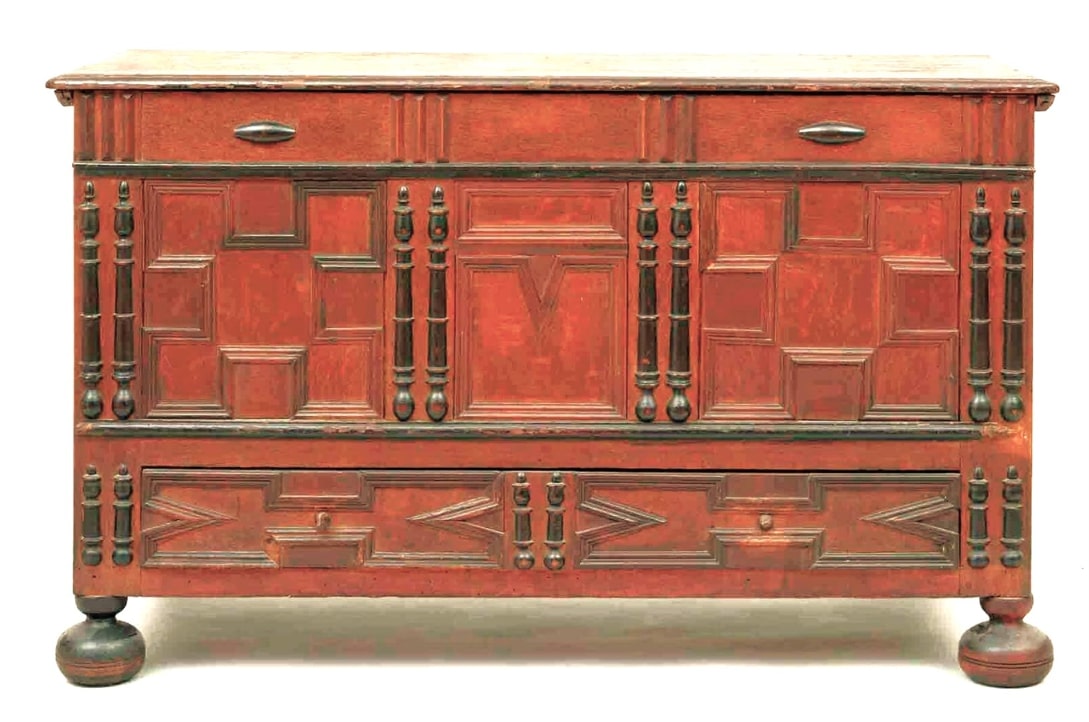
The Osborn family chest is attributed to the James Symonds joinery shop in Salem.
In 2000 the PEM acquired a similar antique chest made in the shop of Symonds from Christie’s Auction House, which fetched $2,422,500. This family chest was connected to both the early Quaker persecutions and the 1692 Witch Trials. You can read more on the background of the original chest owners: Early Quaker Meetings Raided by Salem Authorities.
It is claimed the Osborn chest has Quaker ties as well. That will come later.
These antique chests are referenced in Sydney Perley’s The History of Salem, Massachusetts, Volume 1. Perley refers to one chest as the Trask chest and the other as the Osborn chest.
Perley notes:
The other [Osborn chest] remains in the neighborhood in which Captain Trask lived and is in the possession of Lyman P[erley] Osborn and wife [Elizabeth Cheever Osborn] of Peabody.
A photo image of the Osborn chest appears in Perley’s book.
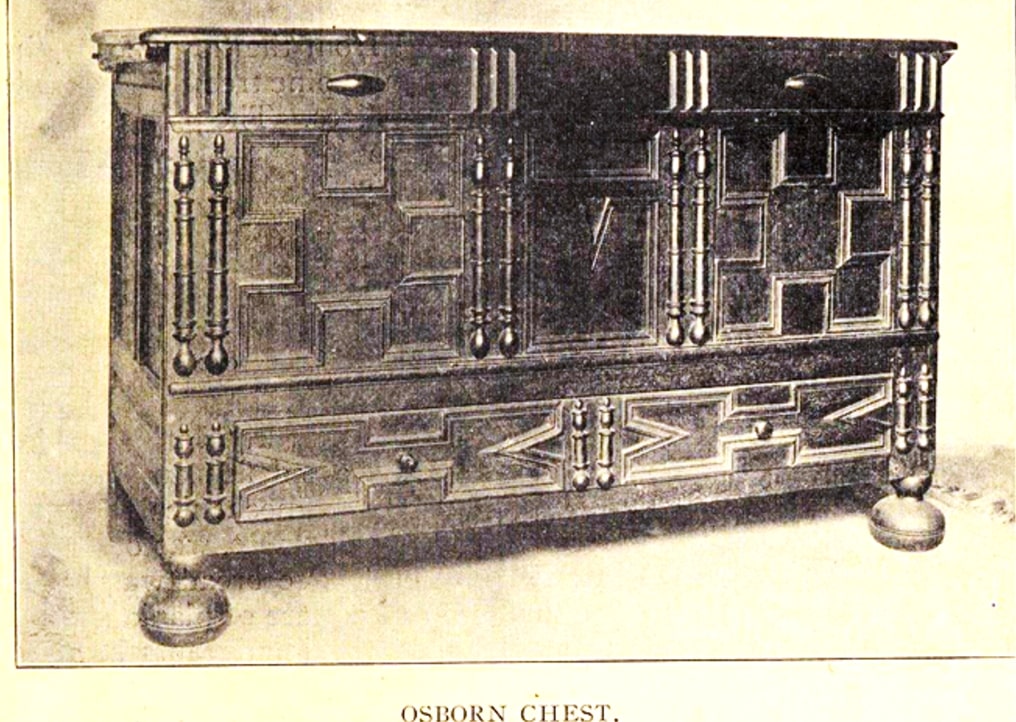
After Perley’s claim, historians credited both chests to the shop of Symonds. However, there is a conflicting narrative to both the family lineage and provenance.
In 1904 William Blake Trask, a descendant of Captain William Trask (who came to Salem with John Endicott in 1628), published Capt. William Traske and Some of His Descendants. In his inventory of the family estate, Trask mentions “chestes.”
The inventory listing “chestes” could include the one which descended into the Osborn family. In order to determine that, you would have to trace the object before it was acquired in 1983 by the PEM – which I will attempt to demonstrate later.
Trask Family Chest
In his book, Trask included a photograph of the family homestead on Boston Street in Salem. The house, built around 1680, was formerly called the Black Horse Tavern.
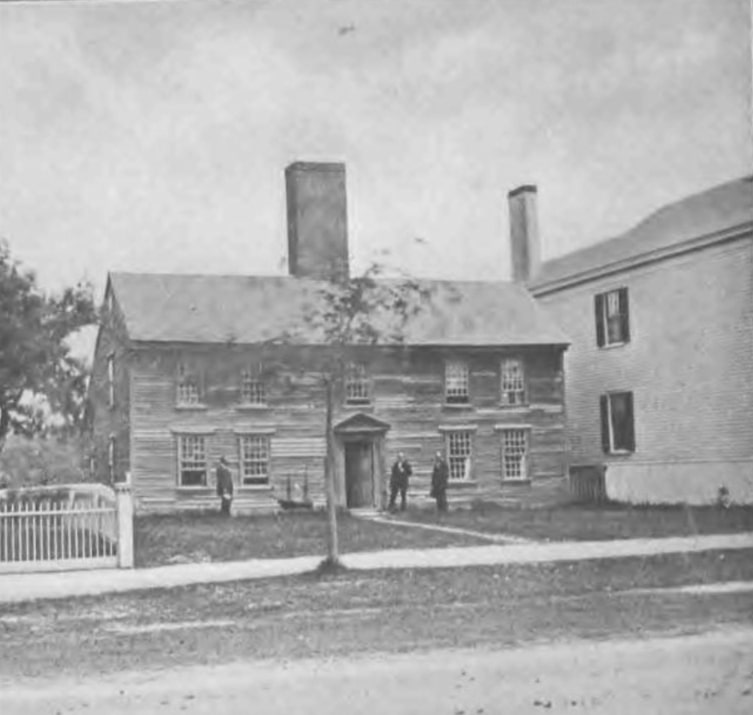
Here is another photograph from Trask’s book, showing the interior of the Trask House. This photo shows the Trask chest, along with an hourglass taken as a war prize by the privateer Harlequin, John Tucker of Salem commander, in the Revolutionary War. Also shown is a model of a brig rigged by Issac Bullock, son of Isaac and Mary (Trask) Bullock, one of the last descendants to occupy the home.
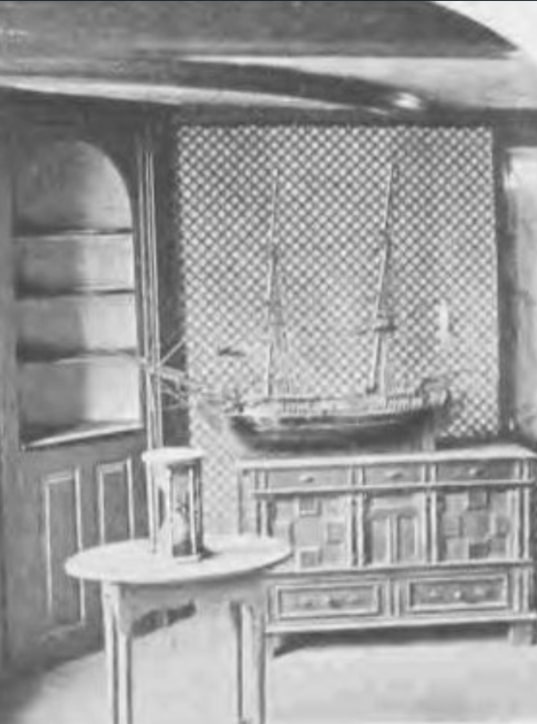
In his book The History of Salem, Massachusetts, Volume 1, Perley said the Trask chest remained in the Trask home until about 1870, and was then in the possession of the Museum of Fine Arts in Boston.
The Trask chest was auctioned in 2011 by Sotheby’s – but that was not the first time this auction house, formerly known as Sotheby Parke Bernet Inc., placed the chest on the auction block. It was auctioned in 1990 and then again in 2002, as referenced in the 2011 auction notes.
More will be revealed in my next story.
A Side Note
I contacted Richard Trask, archivist, historian, and author, and he noted that the Trask genealogy presents some challenges. So, for the sake of this relic I will provide some genealogical research on what has been put out there to date.
Before I begin on the purported history and genealogy of the Osborn chest, here is a Trask family associated with the Salem Witch Trials of 1692 who descended from one of the early Trask families in Salem.
Richard Trask drew my attention to Christian (Woodbury) Trask, the wife of John Trask of Salem, who committed suicide in 1689.
Sarah Bishop, one of the accused witches in 1692, was said to have caused the tragic death of Mrs. Trask.
I found a news clip referencing the testimony of Rev. John Hale of Beverly against Sarah Bishop. Hale interceded in a dispute between Bishop and Mrs. Trask a few years before the witch trials began.
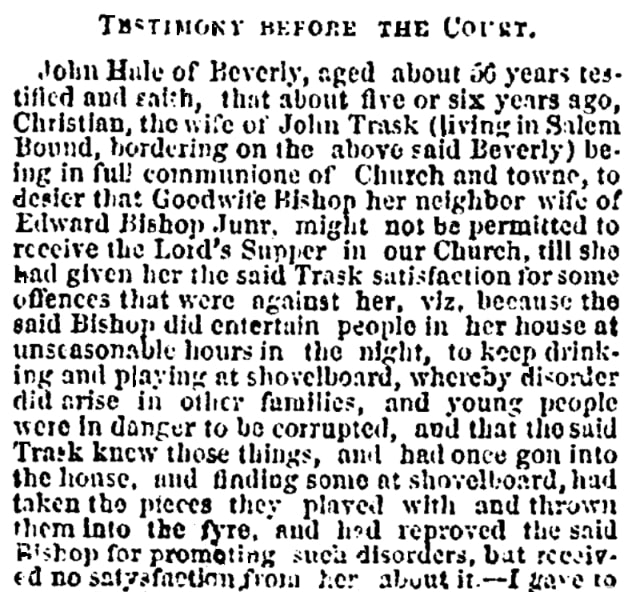
According to this article, Bishop operated a tavern that promoted nocturnal activities of vice and rowdiness often running into the wee hours, causing great distress both emotionally and spiritually to Mrs. Trask.
While I reference the news article, the narrative is a copy of the full transcribed testimony of Rev. Hale dated 20 March 1692, which can be viewed at the University of Virginia Salem Witch Trials Documentary Archive.

Stay tuned…
Explore over 330 years of newspapers and historical records in GenealogyBank. Discover your family story! Start a 7-Day Free Trial
Note on the header image: witchcraft trial at Salem Village. The central figure in this 1876 illustration of the courtroom is usually identified as Mary Walcott. Credit: Wikimedia Commons.
Related Articles:
